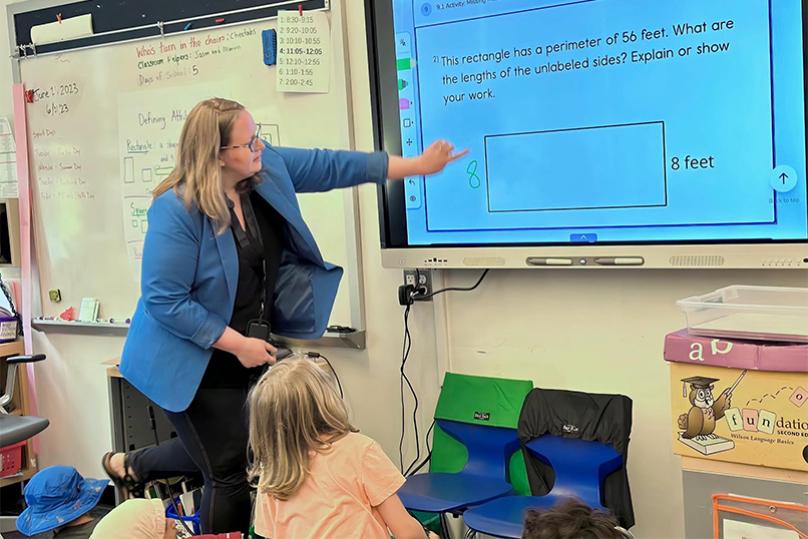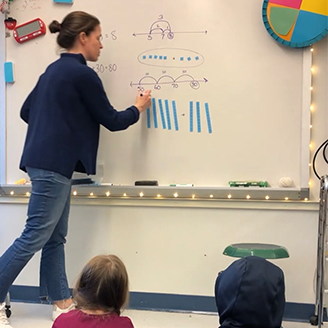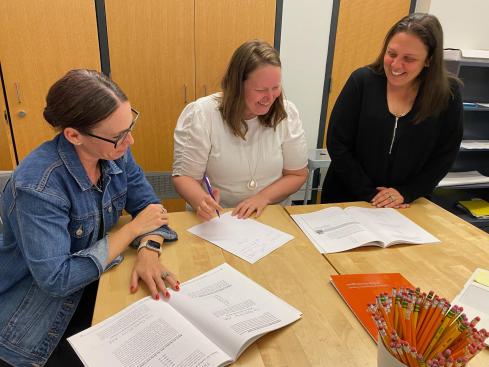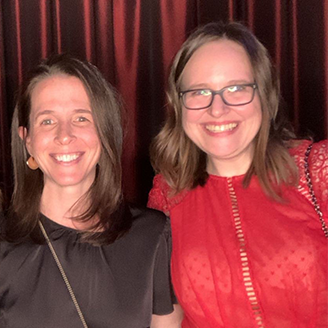
How MƒA enabled two teachers to drive their own professional development and build a collaborative multi-school network for elementary math teachers.
Melissa Singer remembers the moment she realized she wanted to join forces with other elementary math teachers to bring teacher-led professional development (PD) to their schools.
During orientation for her second MƒA fellowship in the summer of 2019, Singer was sitting with her fellow Master Teacher Sophie Brady and several other elementary school math teachers, talking about how inspired they were by the ideas and resources shared by educators in MƒA. At one point, someone joked that they should all just go to each other’s schools and do their own PD.
Everyone laughed, but Singer couldn’t stop thinking about the idea. “The more I thought about it, the more I believed it was an excellent way for us to use what we learned in MƒA to make positive change in our community,” she recalls. Before school began that fall, Singer had successfully pitched the idea to her school’s principal, and she and Brady began working together with a network of teachers eager to build on the MƒA model and create their own PD cooperative at their schools.

Both part of the inaugural class of elementary-level teachers admitted to MƒA nearly a decade ago, Singer and Brady teach and coach math at elementary schools in Brooklyn; Singer at P.S. 130 The Parkside, and Brady at P.S. 8. “Through MƒA and our own networks, we were able to connect with other math teachers and coaches who were curious about coming together, talking about teaching, revising, and asking questions,” Brady says.
Over the first half of the school year, a group of around 10 fifth- and sixth-grade math teachers from schools around Brooklyn went from school to school to participate in professional learning sessions led by different members of the group. “We needed to make sure we had a focus for each one,” Singer says. “We started by brainstorming — listing out all the things we'd like to try, problems of practice or anything that we had.”
Early on in the process, Brady hosted a PD session at her school on math and debate, based in part on her reading of former MƒA Master Teacher Chris Luzniak’s work on the topic. “We took that structure that the kids already were familiar with from their reading and writing classes, and introduced debate as a way to build discourse in the mathematics classroom,” she says. At least one member of the group was so energized by the collaborative PD that she immediately applied to MƒA herself.
“The more I thought about it, the more I believed it was an excellent way for us to use what we learned in MƒA to make positive change in our community."
With the arrival of the COVID-19 pandemic and the transition to remote learning, the group became an even more valuable resource for Singer and Brady. “Some educators felt they lost touch with their larger school communities, [but] we always had each other to lean on,” Singer says of the group, which she came to think of as “the Hive.”
“My principal would say, ‘Melissa, do you know anything about what other schools are doing for this? Text the Hive, and find out,’” Singer says. “Because they would all give me an answer by the end of the day.”

In addition to this collective wisdom, Singer and Brady also benefited from a Professional Learning Team (PLT) within MƒA about how to keep their teaching student-centered even during remote learning. “Elementary school math was really hard to recreate online because so much of it is collaborative and hands-on,” Brady says. “[The PLT] was a think tank to share best practices and keep us committed to the teaching and learning we knew was most valuable for kids.”
Building on their experience with the Hive, Singer and Brady went on to create an MƒA mini-course, “Proof Through Play,” which explored further methods of using debate to engage students in a new way in the math classroom. As in Brady’s earlier PD session on the topic, participants debated different problems among themselves, and then discussed how to incorporate similar exercises into the classroom. “Debate is not necessarily about solving the problem — it's about justifying your thinking, listening to the reasoning of others, and responding to that,” Brady says. “It's a way to open up what the math classroom can look and feel and sound like, and give more kids an opportunity to see themselves in the math space.”

Today, the Hive is still thriving, and Singer and Brady continue to support each other in their pursuit of professional growth — alongside their colleagues in MƒA. “Teaching changes and grows as we learn more about how humans learn or as research comes out,” Brady says. “It’s nice to be in a community that sees teaching as ever-evolving, and supports that in us.”
“MƒA has helped me realize that I am an academic, I am a mathematician,” Singer says. “I see myself more as a leader, and it's really rewarding.”